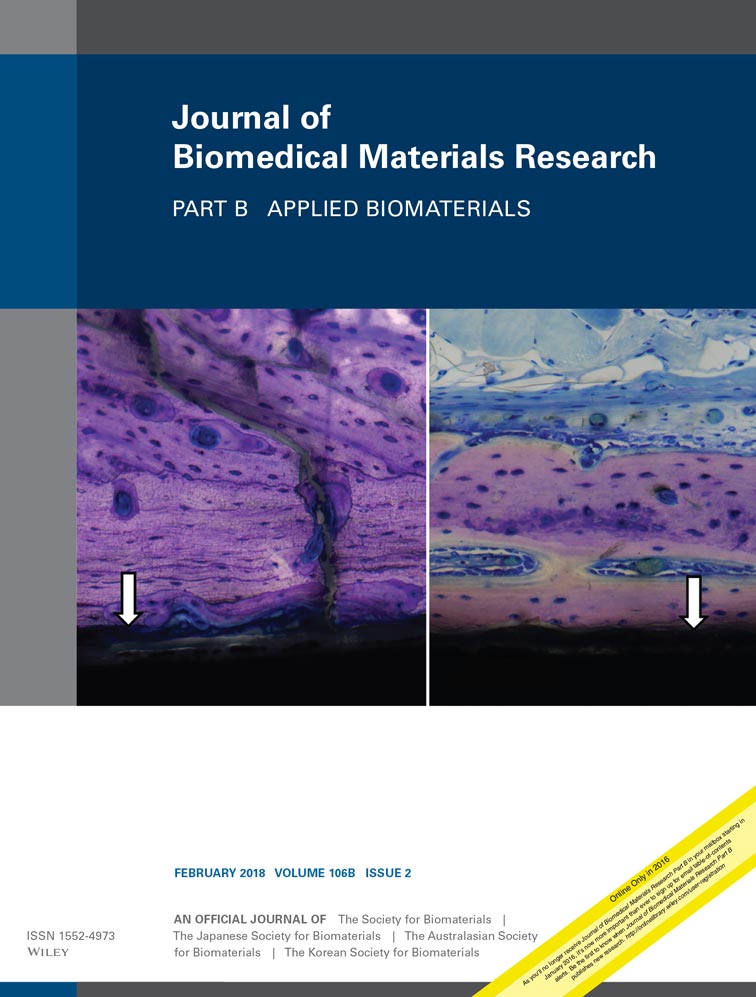A self-deploying drug release device using polymeric films
Abstract
Herein, we report a sheet-type device capable of self-deployment and sustained release of protein type drugs. The device consisted of a thin photopolymerized polyethylene glycol dimethacrylate (PEGDM) sheet and collagen microparticles (COLs), which were embedded in the sheet as drug carriers and for increased drug permeation. When the density of the COLs in the sheet was increased to be sufficiently interconnected, the drug permeability was increased. In addition, since protein type drugs electrostatically interacted with the COLs, a prolonged sustained release was possible. The PEGDM/COLs device was flexible enough to be rolled up, and the device maintained its structure due to van der Waals attractive forces between the sheet surfaces. When the device was immersed in water, the attractive forces acting between the sheet surfaces were relieved by water. Subsequently, the device unfolded by bending-stress relaxation. Moreover, the rolled-up device could be injected through a conventional syringe needle into water to recover its original shape. The developed sheet-type device provides the possibility of minimally invasive transplantation into diseased tissues and organs, and could provide better therapeutic outcomes and reduce possible side effects. © 2017 Wiley Periodicals, Inc. J Biomed Mater Res Part B: Appl Biomater, 106B: 780–786, 2018.




